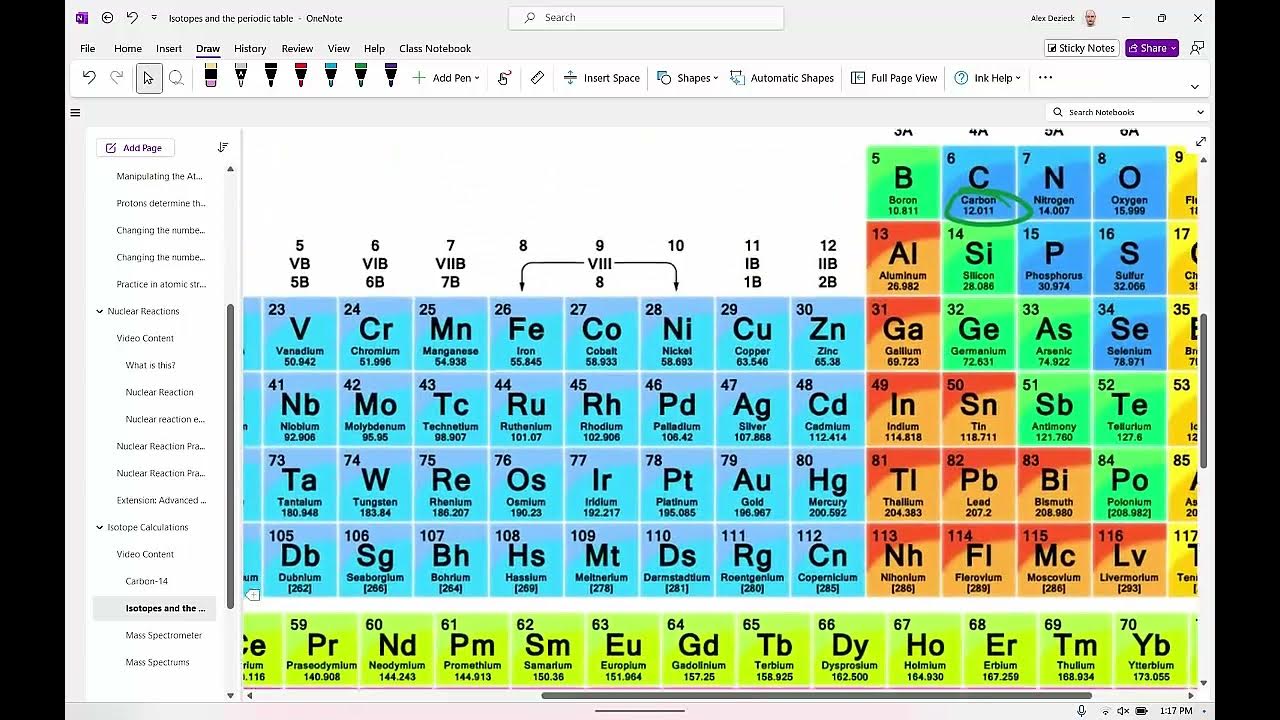06 FBA Part 2 | Flux Balance Analysis | Lecture 11 | Metabolic Engineering | SP20
Summary
TLDRThis lecture dives into flux balance analysis (FBA) and its applications, especially in the context of isotope-labeled compounds and carbon flux analysis. The speaker reviews the history of FBA and its evolution, highlighting the work of pioneers like Professor Popat. The session covers computational tools, reaction accounting, and the importance of incorporating compartmentalization and regulatory constraints. It also introduces the use of tracers to improve the accuracy of microbial physiology predictions, with a focus on metabolic pathways, including fermentation of glucose by Clostridium species and the production of commodity chemicals such as butyrate and butanol.
Takeaways
- 😀 Flux balance analysis (FBA) can be applied to metabolic engineering for predicting microbe physiology under different conditions.
- 😀 Computational tools for FBA have advanced since the 2000s, allowing for the analysis of more complex reaction networks.
- 😀 Understanding reaction pathways and compartments (e.g., periplasm and cytoplasm) is crucial for accurate FBA models.
- 😀 Models should account for regulatory constraints like feedback inhibition, but they are not designed to reflect native transcription factor responses.
- 😀 Incorporating kinetic data, such as enzyme rate constants, is a potential advancement for more accurate FBA models, but this requires more detailed information than is typically available.
- 😀 The early history of flux balance analysis was shaped by pioneering work from scientists like Professor Terry Popa, who contributed significantly to this field.
- 😀 Isotope labeling, such as with 13C labels, allows for the tracing of metabolic fluxes and improves the accuracy of predictions in FBA.
- 😀 Some metabolic pathways, like the acetone butanol ethanol (ABE) pathway, are important for the production of commodity chemicals and fuels, which require precise yield calculations.
- 😀 Compounds like ethanol, butyrate, and butanol are critical in biochemical engineering, and understanding their yields can influence industrial applications.
- 😀 Experimental and literature data, as well as theoretical yields, are essential for improving the accuracy of flux balance models and understanding microbial metabolism.
Q & A
What is the main focus of the lecture?
-The main focus of the lecture is flux balance analysis (FBA) and its application in metabolic engineering, specifically in the context of isotope-labeled compounds and their use in analyzing microbial physiology.
What is flux balance analysis and why is it important in metabolic engineering?
-Flux balance analysis (FBA) is a computational technique used to predict the metabolic fluxes in a system by applying stoichiometric and thermodynamic constraints. It is crucial in metabolic engineering to optimize microbial production of valuable metabolites, such as biofuels and commodity chemicals.
How does FBA incorporate biochemical pathways and microbial physiology?
-FBA involves manually adding up reactions after acquiring a thorough understanding of biochemical pathways. It aims to predict how a microbe's metabolism behaves under various conditions by considering these pathways and adjusting for factors like compartmentalization and regulatory constraints.
What role do isotope-labeled compounds play in flux balance analysis?
-Isotope-labeled compounds, or tracers, are used in FBA to track the flow of metabolites through biochemical pathways. They provide insight into how metabolic reactions proceed in a system and help refine models for more accurate predictions.
What are some challenges and limitations of flux balance analysis?
-Some limitations of FBA include its reliance on lumped parameters and stoichiometric models, which may not fully capture the regulation and kinetics of metabolic pathways. The lack of detailed kinetic data and regulatory information also hinders its accuracy in predicting cellular behavior.
What is the significance of compartmentalization in metabolic models?
-Compartmentalization refers to the separation of different regions within a cell, such as the cytoplasm and periplasm. Accounting for compartmentalization in metabolic models ensures that reactions involving the movement of metabolites across compartments are accurately represented, which is essential for precise flux predictions.
What advancements in flux balance analysis have occurred since 2002?
-Since 2002, there has been an expansion in the number of reactions accounted for in FBA models. Additionally, compartmentalization, regulatory constraints, and the incorporation of kinetic data have been integrated into models, improving their ability to predict microbial physiology under various conditions.
What is the importance of calculating maximum theoretical yields in microbial production?
-Calculating maximum theoretical yields is critical in metabolic engineering because it helps determine the upper limit of production for a given compound. Ensuring that microbial production operates close to this theoretical maximum is vital for optimizing the efficiency of microbial processes in industrial applications.
What was the historical context of flux balance analysis as discussed in the lecture?
-The historical context traces back to early works in metabolic engineering and flux balance analysis, with a reference to the pioneering work of Professor Popat in the 1980s, which laid the foundation for using linear programming and stoichiometric models to analyze microbial metabolism.
How do feedback inhibition and regulatory constraints impact flux balance models?
-Feedback inhibition and regulatory constraints play a significant role in FBA models by limiting or altering the activity of certain pathways. While traditional FBA models do not explicitly incorporate these regulatory mechanisms, their inclusion would help refine predictions about metabolic fluxes and microbial behavior.
Outlines

Cette section est réservée aux utilisateurs payants. Améliorez votre compte pour accéder à cette section.
Améliorer maintenantMindmap

Cette section est réservée aux utilisateurs payants. Améliorez votre compte pour accéder à cette section.
Améliorer maintenantKeywords

Cette section est réservée aux utilisateurs payants. Améliorez votre compte pour accéder à cette section.
Améliorer maintenantHighlights

Cette section est réservée aux utilisateurs payants. Améliorez votre compte pour accéder à cette section.
Améliorer maintenantTranscripts

Cette section est réservée aux utilisateurs payants. Améliorez votre compte pour accéder à cette section.
Améliorer maintenant5.0 / 5 (0 votes)






